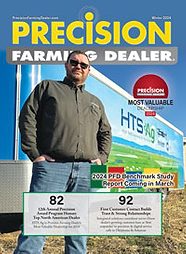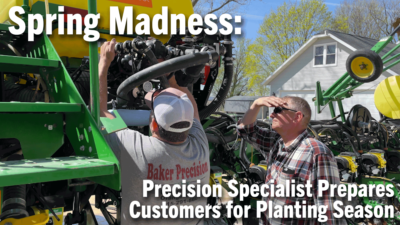Spending last week at my first Agritechnica in Hannover, Germany, proved to be both a unique and familiar experience. Walking the expansive fair grounds (46 miles in 6 days according to my step-counting app), there was no shortage of innovations — large and small — to catch the eye of more than 450,000 attendees.
While the latest tractors and implements were obvious attractions, there were also hundreds of technology companies (among 2,900 total exhibitors) — both global giants and ambitious start-ups — showcasing everything from specialized components to complete solutions.
I’ll admit the scope was initially overwhelming. But navigating aisle after aisle, talking with dozens of international companies, it became evident that they all spoke the same language — technology.
Naturally, some were more fluent than others. A handful of North American equipment and precision dealers at the show noted the abundant overlap and design similarities among hardware products.
Some components had been adapted for European markets, or modified to include features not seen on original versions, which raised the eyebrows of a few North American manufacturers.
“I think I’ve seen our design at about a dozen other booths,” quipped one vendor who had toured several buildings at the event.
And the sophistication of technology ran the gamut from entry-level lightbars to 100 horsepower autonomous tractors. Somewhere in the middle is where many North American dealers currently reside with the products they offer.
“There’s still a lot of manual guidance being used in Europe based on the booths we saw and there’s just not much of a market left for that in North America,” said one precision dealer. “What we want to do here is to see what is going to be practical and available in the future.”
Take-home ideas didn’t include “walking transformer” technology, as one dealer noted, but finding a comprehensive data management service platform was on his wish-list. One of the barriers to finding the right fit — compatibility.
“It’s amazing how much ISOBUS there is here, and it works,” he says. “That’s not the case in the states and a data company I talked to was shocked by that. There are so many smaller equipment companies here that they need to work together to survive, so there’s a much higher compatibility incentive.”
It will be interesting to see what influences the European precision market will have on North America, and vice versa, in the coming years. While farming practices differ in terms of crops, farm size and government regulations, both regions seem to have a lot of technical knowledge to share with one another.
As one dealer says, “It’s good to be here because if you don’t pop your head up and look around, you’ll have no idea what is coming, whether it’s something we’ll be able to sell, or not, is a different story.”







Post a comment
Report Abusive Comment